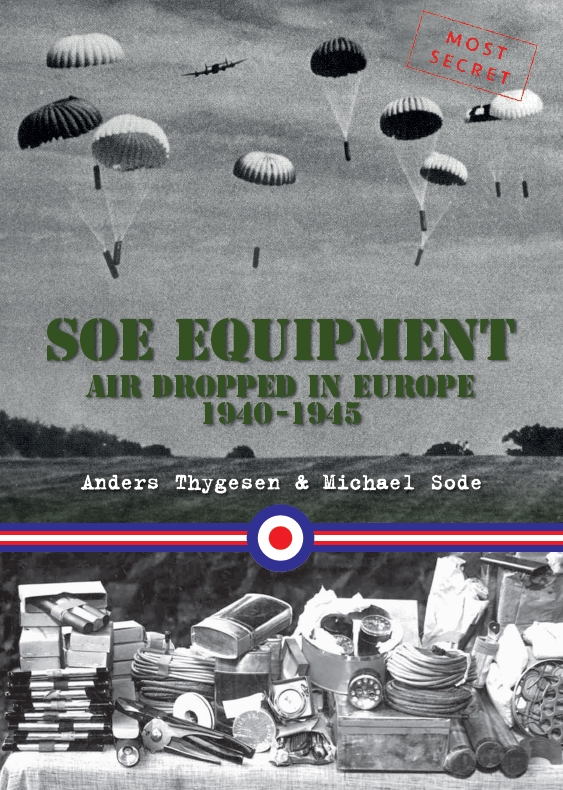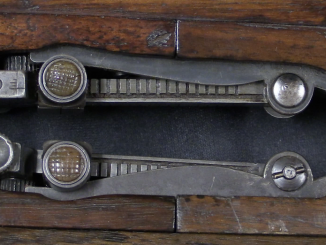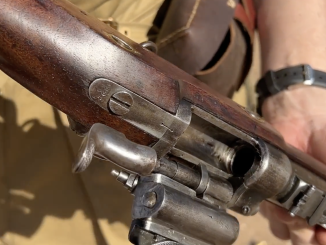Lines Brothers was a company in the UK that made sheet metal childrens’ toys prior to the war. When production of the Sten guns began, Lines Bros was a parts subcontractor. Their engineers analyzed the design alongside the machinery the company had available and redesigned a version of the Sten that they could make very quickly and cheaply in-house, by replacing the tube receiver with a rolled and spot-welded piece of sheet steel. Their first order came in January 1942, to a whopping 500,000 guns, which were designated the MkIII.
The Sten MkII and MkIII were produced simultaneously, and Lines Brothers was the only producer of the MkIII. Ultimately they got three contracts, although the second one was cancelled before it was completed and the third was never begun. A total of 876,794 MkIII Stens were made by September 1943. Once submachine gun production caught up with British needs, the MkII was found to be the superior of the two designs and only it remained in production.
Many thanks to the Royal Armouries for allowing me to film and disassemble these submachine guns! The NFC collection there – perhaps the best military small arms collection in Western Europe – is available by appointment to researchers:
https://royalarmouries.org/research/national-firearms-centre/
You can browse the various Armouries collections online here:
https://royalarmouries.org/collection/




“(…)redesigned a version of the Sten(…)”
http://modernfirearms.net/en/submachine-guns/great-britain-submachine-guns/sten-eng/ claims that
…STEN Mk.III was modification of Mk.I
Can this be approved (meaning that Lines Bros were analyzing specimen of Mk.I) or denied (meaning there were given of specimen of Mk.II) or neither (meaning they get both earlier Marks and combine them before creating their own)?
As I wrote – they had Mk I, and based their design upon it. The MK II was considered a specialty model, paratrooper Dinky toy, while LB were contracted to manufacture the infantry model.
Just a small point, since you used the term “British Isles”.
Ireland is not a British isle.
Ireland is within the “British isles”
just as Canada is within “North America”
they’re physical geography descriptions.
At the time of the second world war, the “Irish free state” was technically still within Britain
full independence and the 26 counties “Republic of Ireland” only arrived after the second world war
The six counties of Northern Ireland remain a politically devolved part of The United Kingdom
No. Ireland is not a British isle. And since you clearly don’t even know the difference between the UK and Britain, I can only suggest you read this article slowly.
https://medium.com/o6o-international/why-ireland-is-not-a-british-isle-2bad28685777
Lines Bros took up Sten at the Mk I period, and tried to make a more technological version of it. They were completely out of the Mk II loop and probably not even aware of its existence. That’s why the same non-detachable bbl and long bbl cover. They got called the Mk III, because it was accepted only after the Mk II was adopted, but actually the Mk III was a direct descendant of the Mk I.
The echoes of the Mk III you can find in Beretta PM12, which also had a rolled receiver with a rib on top. If Lines would take a detachable bbl model as a basis, it would probably be more like American M3. The worst part of the Mk III which Ian skipped (and probably what killed it mid-second contract) was the barrel attachment. The barrel was simply held loose between the breech trunnion and the front lid of the bbl shroud – but NEVER held to the gun in any way. No cross pins, no barrel nuts – no nothing. The result was that during firing the vibration had it turning, and with it the POI was wandering around the target. In Mk II the barrel was inserted into the trunnion and held by bbl nut, and there was a special index mark (a line) at the muzzle, intended to be always put into the receiver in the same position and then blocked by the nut. In Mk III it just rotated freely and out of countrol, resulting in loss of accuracy (granted Sten was not a sniper rifle to begin with) and point of impact shifting between bursts. This essentially killed the second contract, but the already manufactured 750 000 guns were issued anyway. Many of these were issued to tank units – e.g. in Polish Army in the UK the 1st Polish Armored Division was the only unit depicted with Mk IIIs, both in UK before embarkation, as in urban warfare in Breda, Netherlands. Some were also airdropped – a Mk III is depicted in a photo from the Warsaw Uprising in 1944, more can be seen in photos from France, Yugoslavia and Italy. And if 5.5 man-hrs seems damned small for an SMG, consider 2.7 man-hrs per Soviet PPS 43!
Self-correction – PM12 of course the receiver rib was on the bottom, not the top
This rib etc. in Sten, its not much of an innovation. But, if they managed to incorporate lower receiver and magazine well all in one stamping (or 2 joined), that could have been. That was the next step in industrial development, only after ww2
The top rib of the Sten Mk.III is where the spot welds are. These join the ends of the stamped sheet metal that is folded/ wrapped around a mandrel. The front and rear sights are affixed that way, and then it was drilled out to receive the wire loop of the carrying strap, aka shoulder “sling.” An even more simple version was contrived by ze Germans for the MP.3008, aka. the Volksmaschinepistole. In that case, the sheet metal blank is wrapped around a mandrel, and then a couple sheet metal fillets were welded in to seal the tube on either side of the ejection port and the bolt handle raceway. The barrel was pressed in and pinned.
Finland acquired very many Sten Mk.IIIs postwar to beef up the firepower of the infantry squads armed with legacy bolt-action Mosin-Nagant rifles and a few KP m/31 Suomis or KP m/44 peltiheikki SMGs
True about barrel, but after how many rounds it started rotating ?
Iirc there were variants where front rivets poked into a barrel, near muzzle, like an expedient solution to that problem
Any one know the cost to the British government for the two variants?
Northern Ireland was abd is